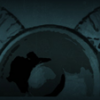A small team including myself are just breaking into indie development. Surprisingly enough we have the programming and art down but we really need advice on one thing. Being the Music and Sound section of the forums and judging on the title you have already surmised what I am about to ask.
We would like to know more about how we can create music to sound like it were on the SNES. More importantly how do we get samples to sound like they were on the SNES. We already know about the horrible echo effect that needs to be there for the nostalgic feel and the fact the SNES had only 8 channels to work with.
But how do we go about making the instruments. And I was also wondering should we have some sort of sound palette? It is important in pixel based games to have a limited color palette but for music would you have something similar like a limited set of instruments?
How would we go about making our own samples to make SNES sounding music?
Help! Trying to create classic SNES sound.
This: http://www.plogue.com/products/chipsounds/ can work really well if you produce them in such a way that adds more clarity and fidelity (i.e. reverb, chorus, etc) to emulate SNES sounds. Plus MANY standard DAWs come bundled with synth instruments that, with a bit of tweaking, can easily emulate the SNES sound. You just have to fiddle with them some. You don't mention what software/hardware you're using so it's kind of hard to give suggestions.
Have you also tried just googling "SNES samples" and seeing what you could dig up? (Note: You're responsible for making sure whatever you're using it legit and legal if you plan to release this game.)
Thanks,
Nate
Have you also tried just googling "SNES samples" and seeing what you could dig up? (Note: You're responsible for making sure whatever you're using it legit and legal if you plan to release this game.)
Thanks,
Nate
Nathan Madsen
Nate (AT) MadsenStudios (DOT) Com
Composer-Sound Designer
Madsen Studios
Austin, TX
if you're looking for SNES (and not NES), the SNES 'sound' was that of very short loops for the samples. Since the SNES had only 64kbytes of RAM, all the game's instrument and sound effects had to fit in it. the data was compressed about 3.5:1, so that was the equivalent of about 224k. Figure half for sound effects and it means all your instruments had to fit into about 100k samples. So try making some short looping sounds. Most of my SNES instrument were only 5-10k samples long. If you make your music with instruments that fit into that small a space (your "instrument palette"), you'll get more of that "SNES" sound.
Also because of memory, sounds were sampled at low sampling rates, often as low as 8-10kHz (maybe for a trombone or kick drum), with maybe 22kHz being the high end.
Another aspect of SNES music was that notes didn't tend to overlap. What I mean by that is that normally if you limit yourself to 8-voice polyphony, you're not REALLY limiting it to 8 because when a "note-off' occurs, the sound still plays out it's decay, so some if the note is still playing into the next beat. So when doing SNES music, we'd very often shorten notes, which would ensure we didn't have unwanted overlap. So a full "quarter note" might be only 400 ticks (instead of a full 480).
Keep to those rules, and your music will probably be SNES-like in no time
Hope that helps
Brian
Brian Schmidt Studios
GameSoundCon
Also because of memory, sounds were sampled at low sampling rates, often as low as 8-10kHz (maybe for a trombone or kick drum), with maybe 22kHz being the high end.
Another aspect of SNES music was that notes didn't tend to overlap. What I mean by that is that normally if you limit yourself to 8-voice polyphony, you're not REALLY limiting it to 8 because when a "note-off' occurs, the sound still plays out it's decay, so some if the note is still playing into the next beat. So when doing SNES music, we'd very often shorten notes, which would ensure we didn't have unwanted overlap. So a full "quarter note" might be only 400 ticks (instead of a full 480).
Keep to those rules, and your music will probably be SNES-like in no time
Hope that helps
Brian
Brian Schmidt Studios
GameSoundCon
Brian Schmidt
Executive Director, GameSoundCon:
GameSoundCon 2016:September 27-28, Los Angeles, CA
Founder, Brian Schmidt Studios, LLC
Music Composition & Sound Design
Audio Technology Consultant
Hello,
Not much to add to what Brian wrote!
In addition to using the bit-reduced samples, the chip is also able to generate simple white noise for sound FX. You actually heard that a lot in games - probably because using this feature saved valuable RAM space.
Also, the SNES' filter echo/reverberation might be noteworthy, especially Capcom made heavy use of this in most of their games. Nintendo's S-SMP works with finite impulse response, but you should be able to emulate the sound by tinkering with an algorithm reverb and listening to references.
Best thing you can do is compare your audio with the real thing and either try to get as close as possible or just get "that 16-bit feeling" with a more modern touch - nothing wrong with that!
Cheers,
Moritz
Not much to add to what Brian wrote!
In addition to using the bit-reduced samples, the chip is also able to generate simple white noise for sound FX. You actually heard that a lot in games - probably because using this feature saved valuable RAM space.
Also, the SNES' filter echo/reverberation might be noteworthy, especially Capcom made heavy use of this in most of their games. Nintendo's S-SMP works with finite impulse response, but you should be able to emulate the sound by tinkering with an algorithm reverb and listening to references.
Best thing you can do is compare your audio with the real thing and either try to get as close as possible or just get "that 16-bit feeling" with a more modern touch - nothing wrong with that!
Cheers,
Moritz
Check out my Music/Sound Design Reel on moritzpgkatz.de
Brian's the man. Period. 
Nathan Madsen
Nate (AT) MadsenStudios (DOT) Com
Composer-Sound Designer
Madsen Studios
Austin, TX
You can hear some of the tricks here:
No high end due to low sampling rates Throughout
(note a lifeless snare with no high end)
Drums cut short w/ no tail at about 0:13
bass 8th notes too short (to keep polyphony down) about :54
Hear the short loops on brass throughout but really noticeable around 1:35
Also, note there there is no multisampling... You have one instrument sample per patch and pitch shift it way beyond all sense of musicality.
things have changed a bit since then (this was '92 I think...)
Brian
--
No high end due to low sampling rates Throughout
(note a lifeless snare with no high end)
Drums cut short w/ no tail at about 0:13
bass 8th notes too short (to keep polyphony down) about :54
Hear the short loops on brass throughout but really noticeable around 1:35
Also, note there there is no multisampling... You have one instrument sample per patch and pitch shift it way beyond all sense of musicality.
things have changed a bit since then (this was '92 I think...)
Brian
Brian Schmidt
Executive Director, GameSoundCon:
GameSoundCon 2016:September 27-28, Los Angeles, CA
Founder, Brian Schmidt Studios, LLC
Music Composition & Sound Design
Audio Technology Consultant
This topic is closed to new replies.
Advertisement
Popular Topics
Advertisement
Recommended Tutorials
Advertisement










